Greek Archaeology Test 1
1/31
There's no tags or description
Looks like no tags are added yet.
Name | Mastery | Learn | Test | Matching | Spaced |
|---|
No study sessions yet.
32 Terms
Pseudodipteral
Potential for double colonnade but not
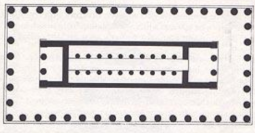
Treasuries
Buildings used to hold expensive dedications
Ionic temple features
Elaborate detail
Continuous frieze
Bases on columns
Antae
Two supports (either columns or statues) between two walls
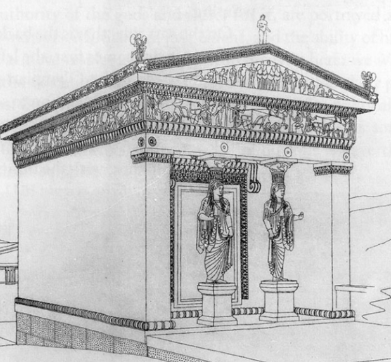
Karyatids
Female figure supports
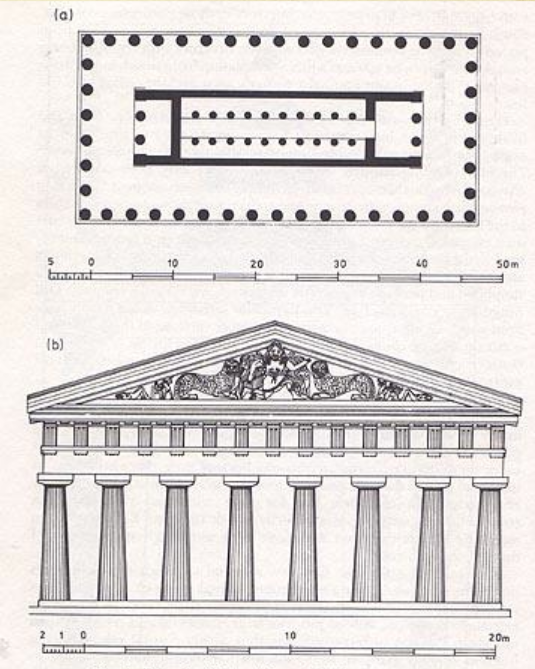
Temple of Artemis, Corfu, 580BC
23.46×49cm
Earliest Doric temple made entirely of stone
Pseudodipteral columns
Inner colonnades in cella creates three interior rows

Pediment of Temple of Artemis, Corfu, 580BC
Large central Medusa figure - character used to warn off unwanted visitors
Medusa’s sons Chrysaor and Pegasus
Archaic style - bulbous eyes - hair in rows - stiff bodily depiction
Indication of running position - not anatomically correct - torso and legs in different positions
Animal iconography - influence from near east
Smaller figures of Zeus attacking giant with thunderbolt - also evidence of awkward archaic style
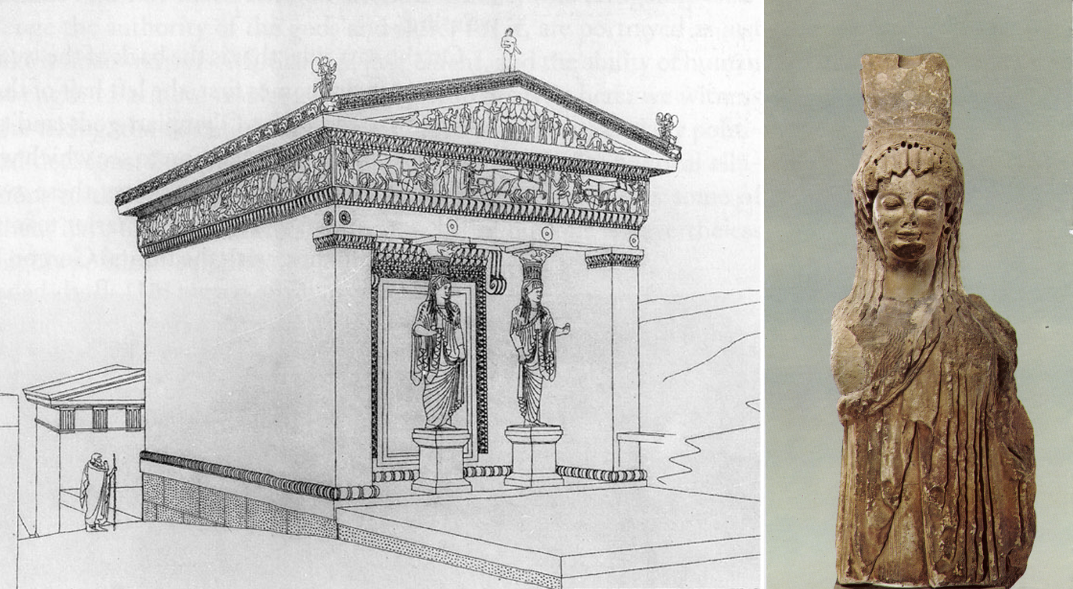
Treasury of Siphnians, Delphi, 530-525BC
Absolute date - rare for archaic period
Ionic style - continuous frieze, bases on supports, richly ornamented
Antae with Karyatids - one hand holding garment other stretching out - holes on heads indicate bronze attachments - archaic face: bulbous eyes and archaic smile
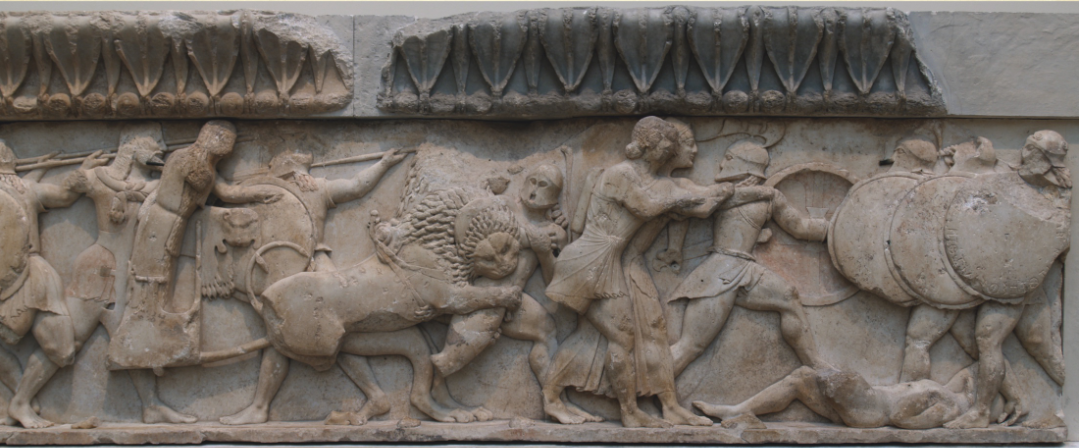
North Frieze of the Treasury of Siphnians, Delphi, 530-525BC
Depicts battle of gods against giants
Colour traces
Dipinti
Signed by sculptor on sculpture itself
Maximum use of space
Complex use of depth - layering of figures allows for depth perception - one figure falls between another’s legs indicating space
Free flowing movement - drapery flowing on giant - developing away from archaic stiffness
Dipinti
Inscribed or painted names identifying characters

East Frieze of the Treasury of Siphnians, Delphi, 530-525BC
Depicts Achilles vs Memnon fighting over a body - retrieving body important to recover arms and/or give a proper burial - depiction of reality in mythological scene
Traces of colour
New techniques of depth perception - layering of horses - foreshortening of bodies to show them coming forward - beginning of development into classical style
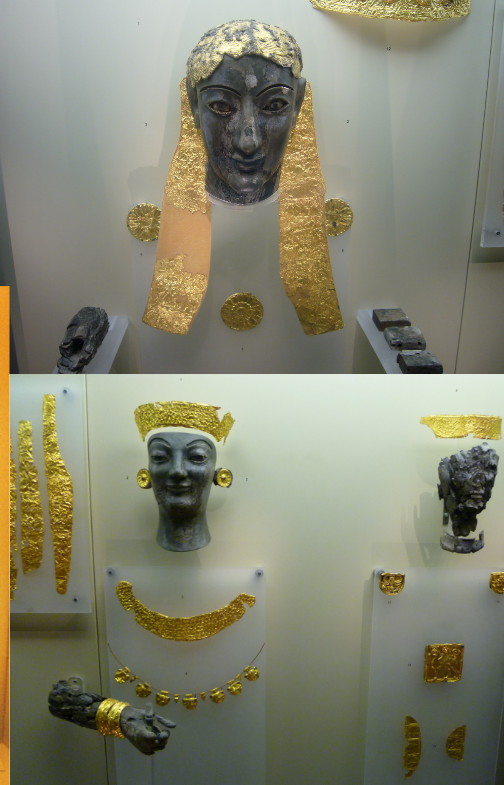
Temple Deposits in Delphi, 6th century BC
Three Chryselephine figures
Perhaps representing Apollonian triad
Luxury deposits are rare in the archaeological record - often looted, destroyed, melted
Sphyrelaton technique
Work of Ionian workshop in near east - shows wide appeal of Delphi - richly decorated and visited
Chryselephine
Gold and ivory statues
Sphyrelaton
Technique of hammering gold leaf into flattened shape
Kylix
Drinking cup
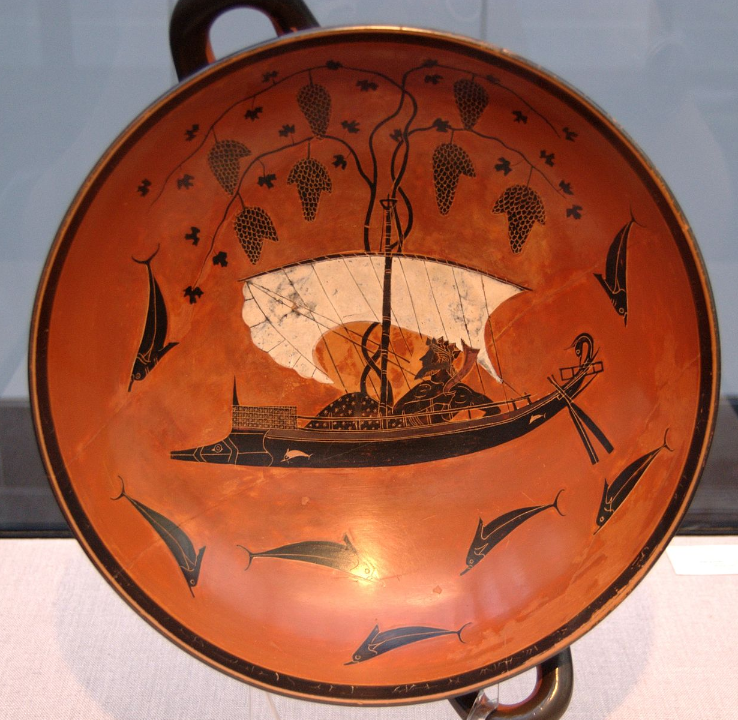
Kylix by Exekias
Black figure technique
540-530BC
Depicts Dionysus myth - turns sailors into dolphins and ship mast into grape vines
Coloured details - purple and white
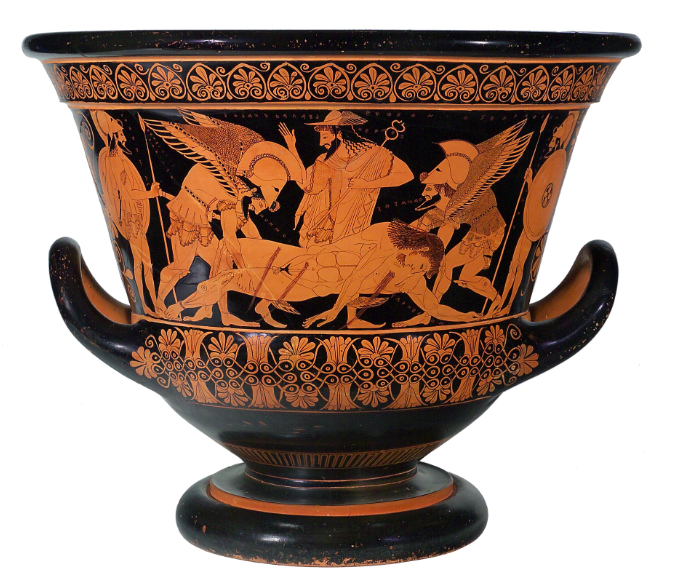
Calyx crater by Euphronius
510BC - part of the pioneers
60.5cm
Found in Etruscan grave
Depicts death of Sarpedon, son of Zeus - Sarpedon fated to die and cannot be saved by Zeus
Sarpedon - larger than other figures creates emphasis - anatomical details - use of dilute glaze to achieve smaller details - darker and lighter glaze adds limited shading - red colour for hair and blood
The Pioneers
Early red-figure painters
515-505BC
Experimenting with movement; anatomical details; thickness of slip; paintbrushes
Red-figure Vase Painting
530-525BC
Reverse of black-figure paintings
No inscribed details
Allows for finer details and flexibility in drawing - freer flowing lines
More emphasis on figures - taking up more space
Bilingual vases
Vases depicting same scene on both sides but inverted black figure and red figure technique
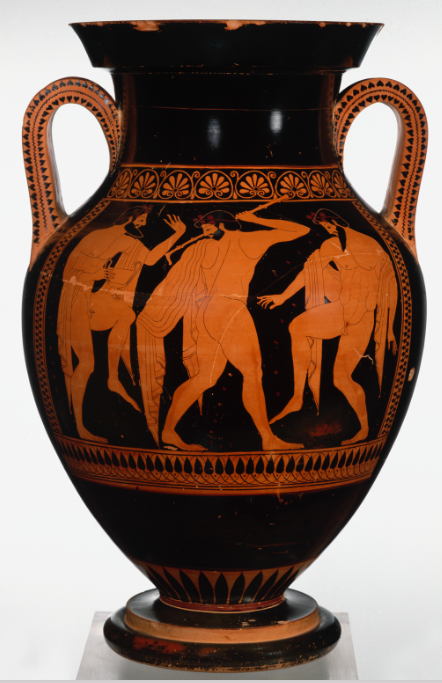
Three revellers by Euthymides
510BC
60.5cm
Found in Etruscan grave
Depicts three drunk figures
Attempt at ¾ view - shortening of limbs to show movement - smooth transition between upper and lower body
Inscription (as well as signature) - “as never Euphronius” - referring to another vase painter - comparing artistic ability - sense of artistic community and competition
Bronze Age
3000-1000BC
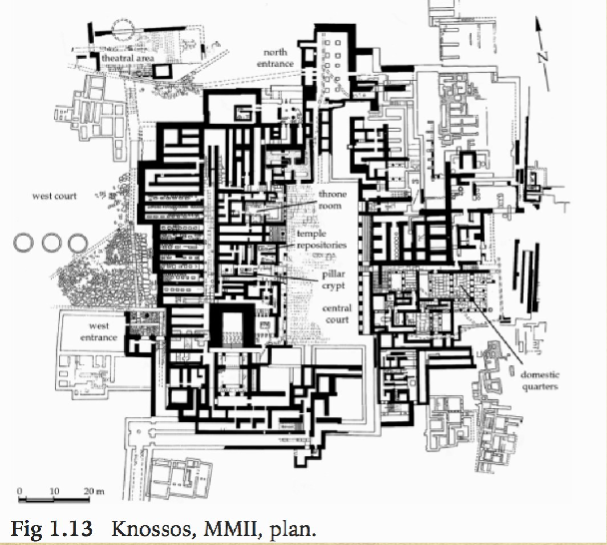
Knossos Palace
Stone foundations - mud-brick walls
wooden beams across ceilings to support second floors
Irregular plan - complex large structure
Possibly acted as a distribution centre - too large for one family - large storage units found with deposits of grain and oil - also evidence of manufacturing
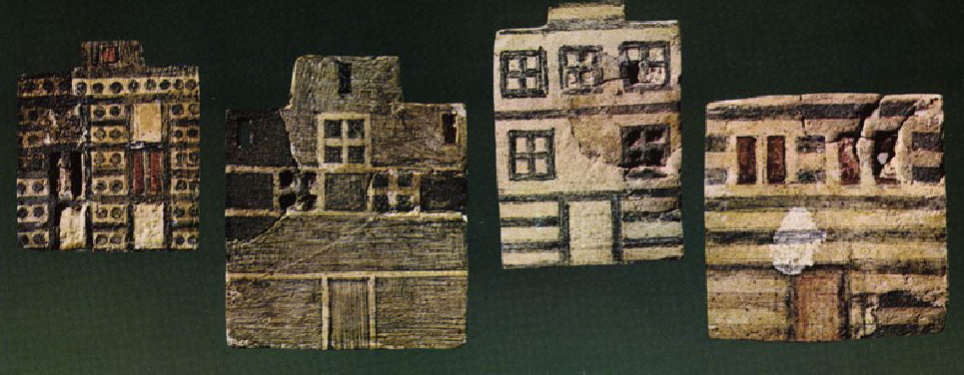
Town Mosaics
Two dozen ceramic tiles found in Knossos
Representation of what buildings used to look like - depicting multiple stories
Used to decorate furniture
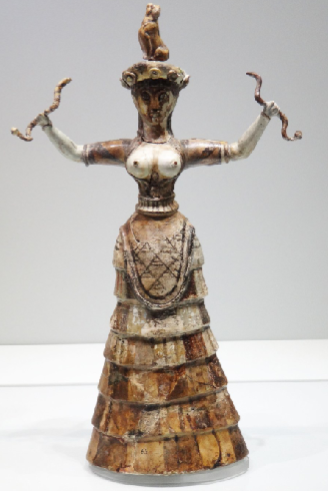
Snake Goddess
Found in Knossos temple repository
30-35cm
Female figure with raised hands holding snakes
Pillared skirt and bodice with bare chest - cap with animal on top - one of many snake goddesses in Knossos pillar crypt
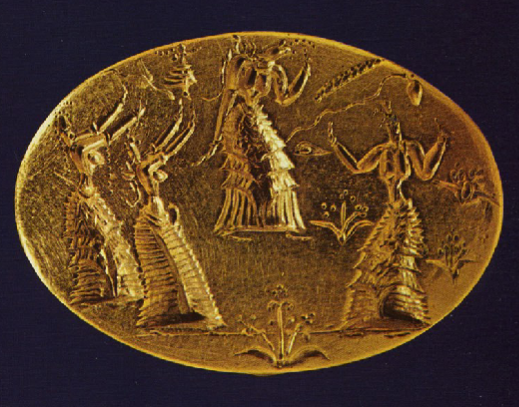
Isopata Ring
Depicts female figures similar to Knossos Snake Goddess
Found in Knossos temple repository
One prominent figure surrounded by other figures
Perhaps worship or adoration?
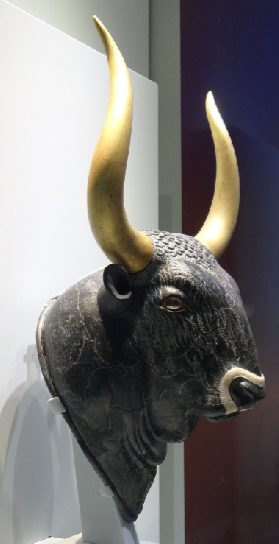
Bull’s head Rhyton
Found in Knossos temple repositor
Serpentine Stone - inlays of golf leaf - rock crystal eyes - shell muzzle
Incredible detail - details of hair and fur wrinkles - accurate rendition of nature
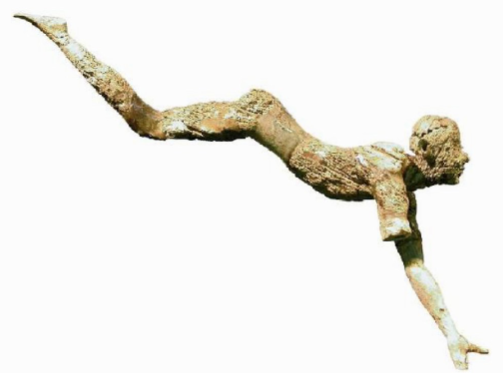
Ivory Figurine, Knossos
Ivory not native to Greek world - evidence of trade and exchange
Perhaps bull leaper - Minoan culture had prominent bull iconography - similar to the famous bull leaping fresco in Knossos
Ashlar Masonry
Dressed blocks made smooth to fit with each other
Cyclopean Masonry
Irregular blocks placed within each other
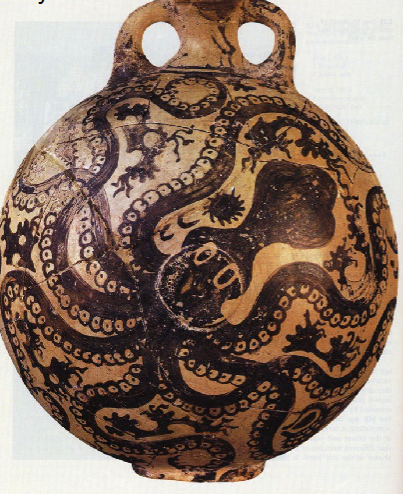
Minoan Pottery Marine Style
1500-1450BC
Marine life iconography - very animated - accurate details but made stylistic